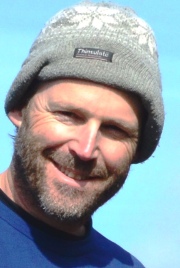How the Great White North can change the world: Canada's role in global biodiversity conservation
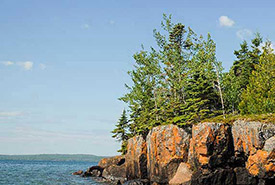
Powder Islands, Lake Superior, ON (Photo by Alan Auld)
I still remember a time when thinking about conservation made me feel disappointed in Canada.
During my undergraduate years at the University of Waterloo in the early 1990s, I learned about the pioneering work of Norman Myers and read subsequent articles and books that identified “biodiversity hot spots” — planetary places with the greatest number of different species. This concept of identifying key places for nature ignited a personal passion for conservation, but my own country was a blank spot on the map of global biodiversity hot spots.
As a northern nation that was mostly covered by glaciers only 10,000 years ago, Canada has fewer species than tropical countries where the evolution and emergence of new species has been operating in stable environments for hundreds of thousands of years. Tiny Panama has 10 times more tree species than Canada. Brazil has hundreds of more species on the IUCN Red List of Threatened Species compared to Canada.
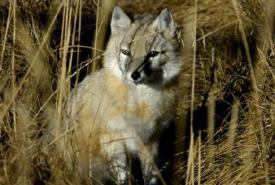
Swift fox (Photo by Karol Dabbs)
Protecting the diversity of species on planet Earth is critical for conservation, and future generations should judge us on the number that we knowingly discard from our global menagerie. Sumatran tigers and Cuban parakeets are important to save, and so is the Yukon grasshopper and the more than 500 other globally rare species that live in Canada.
What has become increasingly clear is that nature conservation must not only focus on areas with high numbers of different species; successful conservation also requires the protection of large, intact ecosystems. These places are becoming increasingly rare and are rapidly disappearing. A 2016 study found that the area of intact wilderness landscapes has shrunk to just 23 per cent of the planet, and has declined by 10 per cent since 1990.
This is where Canada can truly play a global leadership role in conservation. For what the Great White North lacks in biological diversity, it makes up for by biological abundance and richness of intact habitats that are found in parts of Canada and nowhere else on Earth.
For many Canadians, our current biodiversity crisis evokes images of foreign lands and species, but we live in a country where our own conservation decisions matter to the world. Here are four key facts that every Canadian should know about our country, and why Canada is an important force for global conservation:
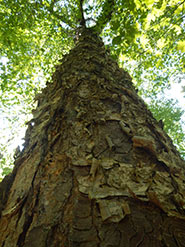
Yellow birch (Photo by NCC)
1. The world’s largest remaining intact forests are in Canada
The world’s largest area of intact forest landscapes are here Canada, in the vast stretch of spruce, fir and birch that extends from Newfoundland and Labrador to Yukon. More than one-third of the Canadian land base (3.5 million square kilometres) is covered with trees. While Canada ranks third for total forest cover (behind Brazil and Russia), we have more intact forest than any other country.
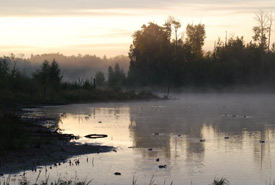
Wetland in Beaver Hills, AB (Photo by Beaver Hills Initiative)
2. Canada has one-quarter of the wetlands remaining on Earth
In a world that has lost an estimated 64 per cent of its wetlands since 1900, Canada has an unparalleled abundance of this important ecosystem. Canadian wetlands are very diverse and range from vast forested peatlands in the boreal, to marshes and deltas in freshwater lakes, to prairie potholes. Canada has approximately 25 per cent of the world’s wetlands by area, and wetland ecosystems cover approximately 1.5 million square kilometres of our county (equivalent to more than twice the size of France).
3. Canada has more freshwater lakes than all other nations combined
Canada has 60 per cent of all freshwater lakes in the world; more than all other nations combined. This includes more than 560 lakes that are larger than 100 square kilometres. In total, there are approximately 2 million lakes, and fresh water covers approximately nine per cent of our country. In a world where freshwater ecosystems are being rapidly lost and degraded, our Canadian cache of fresh water is a unique global endowment.
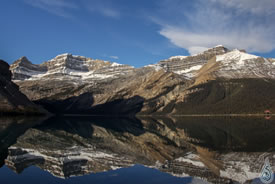
Bow Lake, AB (Photo by Sarah Boon)
4. Canada has the longest marine coast in the world
Canada’s marine coasts measure more than 243,000 kilometres in length. This is the longest coastal stretch of any country in the world, and exceeds the combined coastal length of Japan, Indonesia, Australia, United States, Norway and Russia. Much of our northern coast in the Arctic is still wild and remote.
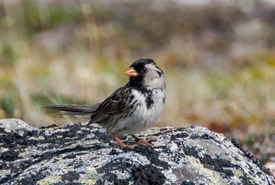
Harris's sparrow (Photo by NCC)
Within these places are extraordinary wildlife. We live in a country that has more polar bears, narwhals, lake trout, caribous, Harris’s sparrows, Jack pines and hundreds of other species than anywhere else on the planet. There are places where Canadians can still observe the awesome spectacle of wildlife abundance, such as the Nature Conservancy of Canada’s Johnson’s Mills Shorebird Reserve and Oak Lake/Plum Lake property.
In a world that is rapidly losing wildlife, Canada has an opportunity to conserve and restore nature’s abundance.
This is what I have learned in the last 25 years since those undergraduate courses taught me about biodiversity hot spots: the Great White North is a not a blank spot on the map of global biodiversity. There is an unparalleled opportunity to conserve ecological wholeness — a conservation opportunity that has slipped away from much of our planet.
Nature is a defining feature of Canada. Our vast, northern geography has shaped our economy, society and Canadian identity. As we mark the 150th birthday of Canada, all Canadians should know what makes our nation unique: our opportunity for global leadership in conservation and our obligation to future generations of Canadians.

